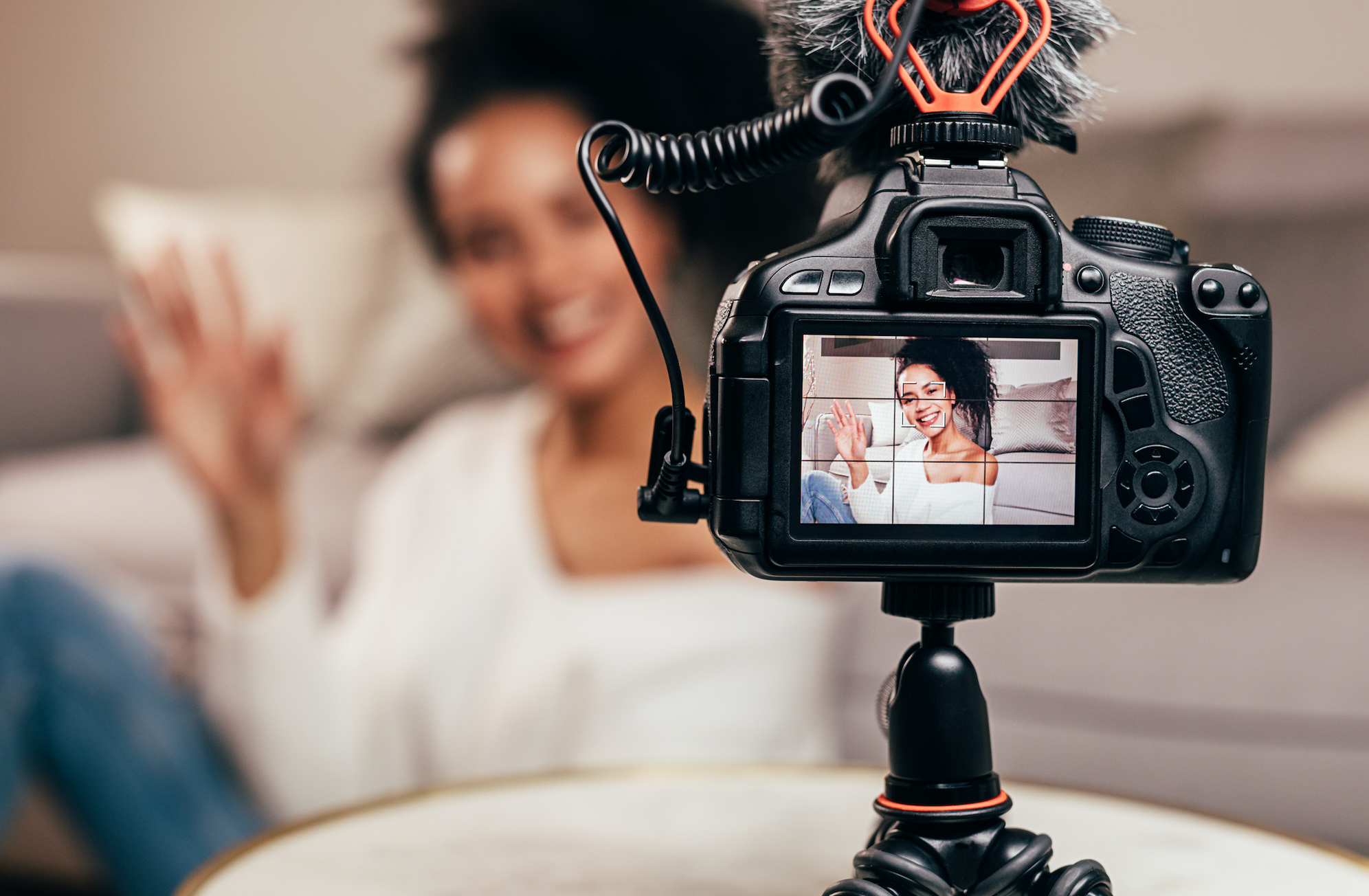Top Influencer Marketing Strategies for B2C Brands from 2024
With the digital landscape evolving rapidly, brands are looking for authentic ways to connect with their target audiences. Influencers bridge the gap by fostering genuine relationships that resonate more with consumers than traditional advertising methods.
This article provides essential B2C influencer marketing tips to help B2C brands stay competitive in 2025. We’ll explore effective strategies, from choosing the right influencers to measuring success, to ensure your influencer marketing campaigns promote products, enhance visibility, and build long-term relationships with your audience.
Understanding Influencer Tiers
Influencers come in different tiers, so selecting the right one is essential to the success of your strategy. These tiers—nano, micro, macro, and mega—offer varying benefits depending on your campaign’s goals, audience and budget.
Nano and Micro-Influencers:
Nano and micro-influencers may have smaller audiences, but their high engagement rates make them ideal for brands aiming to build authentic, personal connections with an audience. These influencers typically have a close-knit following, which makes their endorsements feel more genuine and trustworthy.
Their audiences also provide a unique advantage: they allow for highly targeted campaigns that resonate deeply with specific consumer groups.
These influencers are often more cost-effective, making them an attractive choice for smaller brands working with limited budgets.
For example, a boutique skincare brand might collaborate with a micro-influencer to create Instagram Reels that demonstrate the product’s benefits. This type of content feels more organic and encourages followers to engage with the brand, leading to increased sales and brand loyalty.
Furthermore, nano and micro-influencers often inspire their followers to share their experiences, which can help amplify the reach of your campaign organically.
Macro and Mega Influencers:
On the other hand, macro and mega influencers are suited for brands that need large-scale exposure. These influencers come with a higher price tag but provide access to diverse audiences across multiple demographics. Macro and mega influencers are ideal for businesses aiming for maximum brand visibility. The wide reach they offer can help increase awareness, especially for products or services targeting broad, varied consumer bases.
Collaborating with the right influencers can transform brand perception—not just by gaining exposure, but by forging genuine connections with audiences. At Smoking Gun, we create strategic partnerships that go beyond surface-level promotion, pairing brands with trusted voices that align with their values and audience interests. A perfect example is our work with celebrities such as Fleur East and Pixie Lott for sportswear brand Dare 2b, where we developed a celebrity-led influencer campaign that drove national media coverage and engaged audiences across social platforms. Whether it’s teaming up with micro-influencers to reach niche communities or working with high-profile names to amplify national or global reach, we engineer campaigns designed to build brand love, drive sales, and shift perceptions. From concept and content creation to contracts and measurement, our full-service approach ensures every collaboration delivers lasting impact.
The aspirational content created by macro and mega influencers often leads to direct conversions, especially in high-end markets, but also for FMCG brands like our Munchkin campaign with Dani Dyer. These influencers can help position your brand as a desirable, must-have product among a large audience.
Which Influencer Tier is Right for Your Campaign?
The right influencer tier depends on your specific campaign objectives. If your goal is to build long-term relationships and foster engagement with a focused audience, nano and micro-influencers are a better fit.
Their more authentic approach creates a sense of community and trust with potential customers. However, if your objective is broader brand awareness and rapid visibility, macro and mega influencers are more suitable. Their wide reach and ability to influence large groups can help your brand make an immediate impact.
Ultimately, understanding the strengths and weaknesses of each influencer tier and aligning them with your brand’s goals is crucial to developing a successful influencer marketing strategy in 2025.
Crafting the Perfect Partnership
The success of an influencer marketing campaign often hinges on the partnership between the brand and the influencer. To achieve authentic and impactful results, it’s crucial to align your brand’s values with the influencer’s persona. When there’s a genuine connection between the two, the content feels more natural and resonates deeply with the audience. This alignment fosters trust and increases the likelihood of building long-term relationships with potential customers.
Building a successful partnership starts with thorough research. Before approaching an influencer, take the time to study their past content, audience engagement and overall brand fit. You want to ensure that their brand aligns with your company’s ethos. For example, if your brand focuses on sustainability, partnering with an eco-conscious influencer can amplify your message and reach the right audience.
Clear communication is also key to a smooth collaboration. Set expectations from the outset to avoid misunderstandings. Outline the deliverables, campaign goals and timelines, and ensure both parties are on the same page about the type of content to be created. Flexibility is equally important, though. Influencers are creative professionals, and giving them the freedom to produce content that feels authentic to their style will lead to more engaging and organic posts.
Another vital aspect of crafting the perfect partnership is protecting both sides. A solid contract is necessary to outline responsibilities, payment terms, and any other legalities involved in the collaboration. This helps prevent issues down the line and ensures that both the brand and the influencer are fairly compensated for their work.
Successful influencer partnerships often involve sponsored posts, product gifting or exclusive deals, allowing influencers to review products in a way that feels less promotional and more organic. This approach can help your brand showcase its products in a more authentic light, leading to higher engagement rates and a stronger brand perception.
For example, a sustainable fashion brand might collaborate with an eco-conscious influencer to promote a new collection. Allowing the influencer creative freedom to produce content on platforms like Instagram and YouTube can help foster a more authentic connection, resulting in higher engagement and long-term brand loyalty.
In the end, the goal is to create a partnership that benefits both parties, while also fostering a deeper connection with the target audience. By choosing the right influencers and maintaining transparent, respectful communication, your brand can build partnerships that stand the test of time.
Content Creation and Execution
Creating content that resonates with your target audience is central to any influencer marketing campaign. In 2025, the key is producing content that feels authentic and aligns with the values of both the brand and the influencer. The success of your campaign depends on how well this content captures your audience’s attention.
You should already have defined the primary goal of your campaign when selecting the influencers you want to work with. Make sure to keep these goals front and centre when creating content. For example, if you’re aiming to boost sales, you may want to focus on content that highlights the benefits of your products in a way that encourages immediate action, such as influencer reviews or tutorials. On the other hand, if your goal is brand awareness, content that showcases your brand’s mission values, or story may be more effective.
Once your objectives are clear, collaborate with influencers to brainstorm ideas that will resonate with their audiences. Influencers are the experts when it comes to creating engaging content, so allowing them creative freedom is crucial. Whether it’s a tutorial, a product review or a behind-the-scenes look at how the influencer uses your product, their unique voice and style can help make the content feel more organic and trustworthy.
When it comes to content types, each platform has its strengths. Instagram is excellent for visually driven campaigns, especially with tools like Stories and Reels, which can be used to show off products in action. TikTok thrives on short, creative, viral content, while YouTube works well for longer-form videos that dive deeper into product reviews, tutorials, or demonstrations. Tailoring content to the platform ensures maximum engagement and helps your brand reach its intended audience.
But content creation doesn’t stop with posting. Measuring how well your content is performing is crucial to understanding its impact. Measuring success means tracking relevant metrics that align with your campaign goals. For example, if your goal is engagement, track metrics like likes, comments, shares, and overall interactions. High engagement often signals that your content resonates well with your audience, sparking conversations and increasing brand loyalty.
If your focus is on reach and visibility, look at metrics like impressions and reach to see how many people have seen your content. While these numbers don’t necessarily reflect deep engagement, they are crucial for campaigns aimed at expanding your brand’s visibility and making new connections with potential customers.
Conversion rates are essential for campaigns with a direct sales objective. Track how many people clicked through from the influencer’s post and made a purchase, subscribed to your newsletter or completed any other desired action. This metric will help you assess your campaign’s ROI.
Additionally, keep an eye on audience growth across your social media profiles. If your influencer campaign is successful, you should see an increase in followers as people are drawn to your brand through the content created by the influencer. This growth indicates that your influencer marketing efforts are expanding your brand’s reach and attracting new potential customers.
Leverage tools like Google Analytics, Hootsuite and influencer-specific platforms to measure these metrics effectively. These tools provide detailed insights, allowing you to track campaign performance and identify areas for improvement. With this data, you can optimise future campaigns by refining content types, adjusting messaging, or partnering with influencers whose content resonates best with your target audience.
In summary, successful content creation goes hand-in-hand with measuring its effectiveness. By setting clear goals and tracking the right metrics, you can ensure that your influencer marketing campaign delivers measurable results and builds deeper connections with your audience.
Leveraging Social Media Platforms
We’ve already mentioned that each platform has its own strengths and weaknesses when it comes to types of content, but let’s now look at their unique features and audience demographics. Understanding these factors will help you maximise your influencer partnerships and achieve your campaign goals more effectively.
Instagram remains one of the most popular platforms for influencer marketing. Its visual nature makes it perfect for showcasing products, services and lifestyle content. Instagram features like Stories, Reels and carousel posts allow influencers to create diverse content that engages their followers in different ways.
Stories are perfect for time-sensitive promotions or behind-the-scenes content, providing a more personal connection with followers. Influencers can also use the “Swipe Up” feature to direct traffic to your website or product pages, increasing the likelihood of conversions.
Reels are short, engaging videos that can go viral. They are ideal for quick, attention-grabbing content, and their algorithm prioritises organic discovery, helping your brand reach new potential customers.
Carousel Posts allow influencers to showcase multiple products or tell a story in a series of images. This is great for in-depth product demonstrations or showcasing different aspects of your brand.
TikTok
TikTok has become the go-to platform for younger audiences. With its short-form video format, TikTok offers brands a unique opportunity to design creative, engaging content that captures users’ attention within seconds. TikTok’s algorithm favours fresh, entertaining, and relatable content, making it ideal for influencer campaigns that aim to go viral.
Influencers on TikTok thrive by engaging in challenges, trending sounds, and user-generated content, which often leads to organic viral moments. Brands can collaborate with influencers to tap into these trends, promoting products in a fun and engaging way that resonates with TikTok’s community. By participating in challenges or creating your own, your brand can gain visibility and connect with users in an authentic manner.
TikTok is also effective for brand storytelling. Influencers can create short, impactful videos that highlight a product’s unique selling points or show how it fits into their daily life. This personal approach helps build trust and authenticity with the audience, essential for long-term brand loyalty.
YouTube
YouTube remains the platform of choice for long-form content, making it ideal for campaigns that require more in-depth storytelling. Whether it’s a product review, tutorial, or unboxing, YouTube provides the space for influencers to create detailed content that can fully showcase the benefits of your products or services.
Video content on YouTube tends to have a longer shelf life than posts on other platforms. This means your influencer campaigns on YouTube can continue to drive traffic and engagement long after the initial upload. YouTube is also a powerful search engine, so well-optimised videos can help your brand appear in relevant searches, generating organic visibility over time.
Influencers can create sponsored content, where they share their honest reviews or experiences with your product, helping to build credibility and trust with their audience. Tutorials, product demonstrations, and lifestyle vlogs are all popular formats that work well for influencer marketing on YouTube, especially for brands that offer products requiring explanation or demonstration.
By understanding the strengths of each platform and tailoring your content to fit, you can ensure that your marketing campaign is optimised for success across social media channels.
Future Trends and Predictions
As influencer marketing continues to evolve, it’s essential for brands to stay informed about emerging trends that can shape their strategies in 2025 and beyond. Keeping an eye on these trends will help you adapt your approach, remain competitive, and build deeper connections with your audience. Here are some key trends to watch out for in the coming year.
The Rise of AI and Virtual Influencers
In 2025, we can expect to see an increasing presence of AI-generated influencers and virtual influencers in the marketing landscape. These digital personas, created using advanced AI technology, can be fully customised to reflect a brand’s values and resonate with target audiences. Virtual influencers offer endless creative possibilities, allowing brands to craft highly controlled, consistent messaging without the limitations of human influencers.
While AI influencers are still relatively new, their popularity is growing. They can engage audiences in innovative ways and provide brands with full control over content creation. As technology advances, virtual influencers may become an integral part of influencer marketing strategies, especially for brands looking to push creative boundaries.
Increasing Demand for Transparency and Authenticity
As consumers become more discerning about the brands they support, there is an increasing demand for transparency and authenticity in influencer marketing. In 2025, brands must build genuine relationships with influencers who align with their values.
Transparent partnerships, where influencers are open about brand collaborations, will be key to maintaining consumer trust.
The Impact of Regulatory Changes
As influencer marketing grows, so does the need for clearer regulations. In 2025, stricter disclosure guidelines will likely reshape the influencer marketing landscape. The rise of influencer marketing has led to increasing concerns about transparency, leading to calls for more stringent rules around disclosure of paid partnerships and sponsored content.
Brands must stay informed about these regulatory changes and ensure they comply with all relevant guidelines. Properly disclosing partnerships, following platform-specific rules, and maintaining ethical marketing practices will not only help brands avoid legal pitfalls but also ensure they retain consumer trust in the long term.
User-Generated Content (UGC) as a Key Strategy
User-generated content continues to be one of the most powerful tools in influencer marketing. In 2025, UGC will play an even bigger role in campaigns as consumers seek more authentic and relatable content. Encouraging customers to share their experiences with your brand can amplify your reach, build trust, and act as social proof.
By tapping into UGC, brands can create a sense of community around their products and services. Influencers can help facilitate it by encouraging their followers to create content or share their stories. This not only boosts engagement but also increases the credibility of your brand, as potential customers trust peer recommendations over traditional advertising.
Live Streams and Real-Time Engagement
Live streaming will continue to grow in popularity as a powerful tool for influencer marketing. Live streams allow influencers to engage with their followers in real time, creating a sense of exclusivity and immediacy. Brands can partner with influencers to host live product launches, Q&A sessions, or behind-the-scenes content, creating more interactive and engaging experiences.
Live streaming can also be used to promote contests and giveaways, driving audience participation and fostering real-time connections. This trend reflects the increasing demand for interactive and engaging content, where consumers expect more than just passive consumption.
Key Takeaways
Influencer marketing continues to be a vital part of B2C strategies as we move into 2025. With evolving consumer expectations and emerging trends, brands must adapt to stay relevant in a highly competitive marketplace. By understanding influencer tiers, crafting authentic partnerships, creating engaging content, and measuring success effectively, you can ensure your influencer marketing campaigns remain impactful and aligned with your brand’s goals.
The future of influencer marketing lies in transparency, creativity, and innovation. Virtual influencers, the rise of user-generated content, and the continued importance of authenticity will shape how brands interact with their audiences. Staying informed about these trends and leveraging the right platforms will be essential to achieving long-term success.
As you prepare for your influencer marketing campaigns in 2025, focus on building genuine relationships with influencers, creating content that resonates with your audience, and using data to continuously refine your approach. By doing so, you can foster trust, drive engagement, and position your brand for continued growth in the years ahead.
Influencer marketing isn’t just a passing trend—it’s an essential strategy that can help your brand connect with consumers in meaningful ways. So, as you look to the future, embrace innovation, adapt to new trends, and continue building strong, lasting relationships with your audience.
Need support making sure your next influencer marketing campaign has business impact? Speak to us today.










